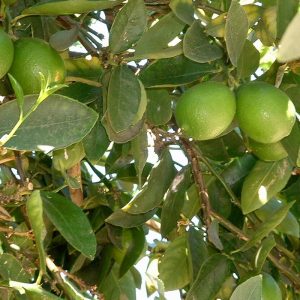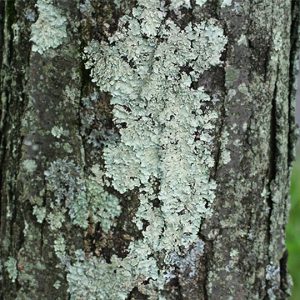Citrus & Fruit Bearing Plants
Citrus are in full bloom now and its no wonder the sweet-scented orange blossom was chosen as Florida’s state flower! The most popular orange variety is the seedless Navel – but don’t count out the Hamlin orange that is another tried and true favorite. Valencia is the most popular juice orange, but, it is also a very sweet orange for hand eating. Ruby Red is the red grapefruit of choice, but again, don’t count out some the newer red varieties, Flame and Star Ruby, that are a deeper red and sweeter, but the fruit is not quite as large as the Ruby Red.
The best tangerine varieties for our area are the sweet Dancy (one of the oldest tangerine varieties that have the easy ‘zipper’ peel), the sweet Honey Murcott and the cold hardiest of the citrus, Satsuma tangerine. Minneola Tangelo ‘Honeybell’ is the tangelo of choice. Lemons and limes are ever bearing and produce fruit and flowers almost year-round. For lemons the Meyer is favored over all others.

Lime Tree
Limes are the somewhat colder sensitive of the citrus. The Limequat was developed for its cold hardiness by crossing a Key Lime with a Kumquat, thus the name Limequat. The fruit is the size of limes, turns yellow when ripe and when cut open is the greenish-white color with a lime flavor. You also will see Persian Limes.
We are often asked if you have to have two citruses for pollination – the answer is NO. You do NOT have to have two citruses for a tree to bear fruit. We may have our new citrus order in when you are reading this! Check at the Garden Center.
Peach, Nectarine are all starting to bloom and will set fruit once the flower drops. Fruit will mature and ripen early to late summer. We hope to have some peach trees and avocado trees available in the next week here at Verdego. Keep checking.
Blueberries, Apples, Pears and Plums do REQUIRE TWO plants for pollination and fruiting. Fruits -Avocado, Peach, Nectarine, Persimmon, Pomegranate and Fig do NOT require two plants. Some grape vine varieties do need two plants, but the Muscadine varieties are self pollinating and only one is needed.
Here is a recommended spraying guide for the deciduous fruit trees:
• Green Tip Stage: when branch tips show green tissue- spray
• Pre bloom: when blossoms are present but not open-spray
• Full Bloom: DO NOT apply any product
• Petal Fall Stage: when the last petals have fallen off blossoms
• 1st Cover: 7-10 days after petal drop
Lichen:
Frequently, customers come into the Garden Center with pictures or samples of lichen they have in their Garden. Most often people think that the lichen is killing their tree or plant. This is NOT the case. Lichens are moss like organisms that grow on the bark and branches of trees or shrubs. They do not attack and kill. They are a very natural part of the landscapes and wooded areas.
Plants covered with lichens may look trashy, but there are reasons why they are covered. The lichens grow rapidly when exposed to sun and a bare plant or plant with a thin canopy create ideal locations for lichen to proliferate. If a plant is declining and covered with lichen, there is some other cause. Consider other possible causes of the plant’s poor growth like stress, drought, diseases or insects. Lichens are not considered pests. There are no chemicals we can spray to legally control lichens. You can try picking them off the bark or pruning out covered branches, which may already be dead.
So, after knowing what lichens are, don’t panic and blame them for killing your plants. Rule out lichens as the cause and start checking for other possibilities.
